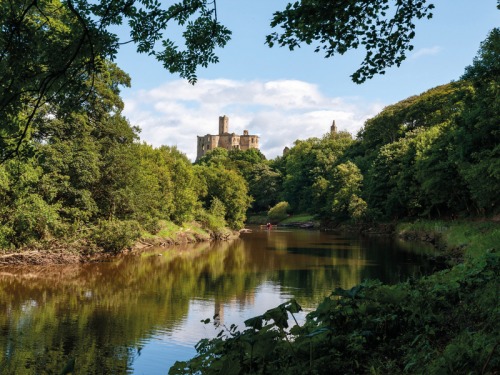Discover the New Exhibit Honouring the Sycamore Gap Tree
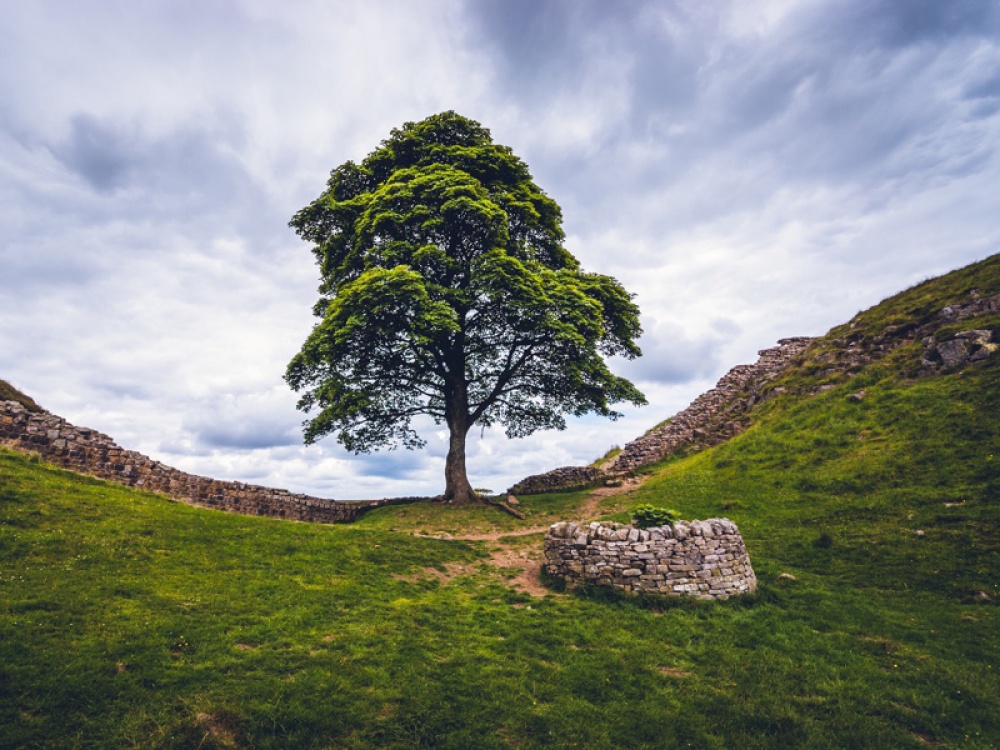
Nearly two years after the Sycamore Gap tree was unlawfully felled, a new permanent exhibition based around the tree's largest remaining section has opened
It was a story that shook the UK when it broke, and has remained an emotional topic ever since. In September 2023, two men (who have since been convicted) cruelly cut down one of the North East’s most iconic landmarks, the Sycamore Gap tree which had stood proudly in its place on Hadrian’s Wall for more than 100 years and inspired countless artists, local businesses and writers.
In the aftermath, there was a great outpouring of emotion from the public – but what could be done to honour the tree? A new permanent exhibition at The Sill: National Landscape Discovery Centre (the closest visitor centre to Sycamore Gap) is aiming to answer that question.
A touching art piece inspired by the local community has recently opened containing the largest remaining section of the tree. Created by artist Charlie Whinney, the exhibition is a culmination of the thoughts and feelings of the local community.
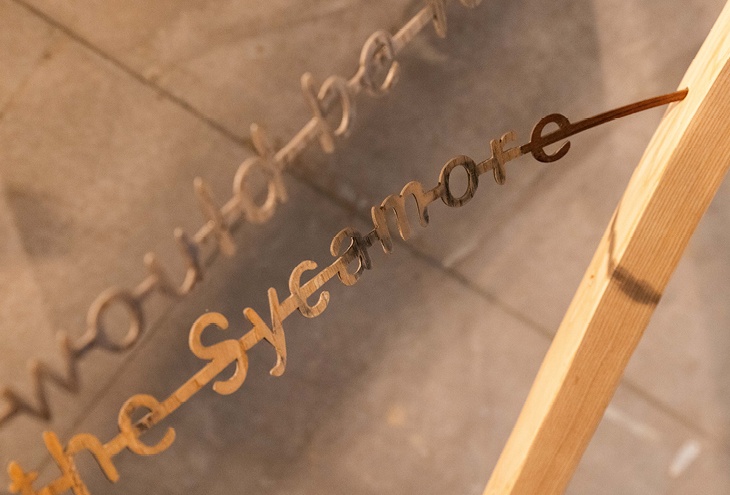

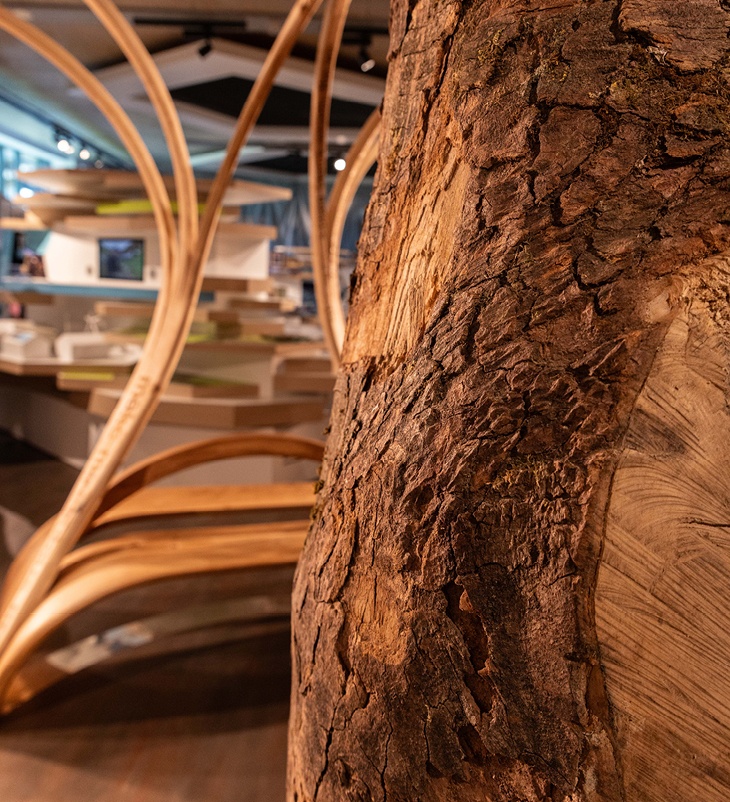
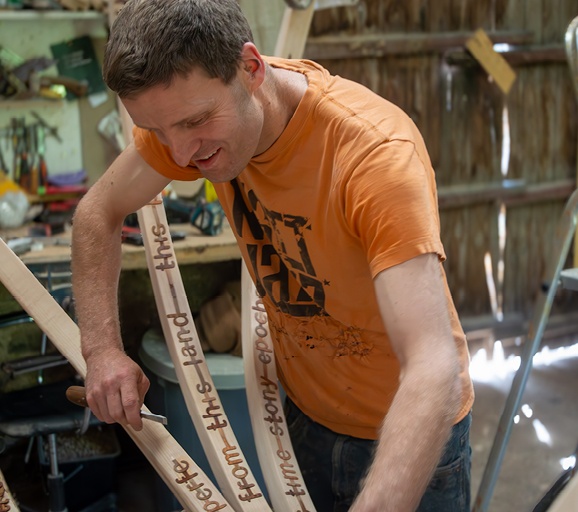
An artist based in Cumbria with a strong interest in sustainable materials and woodwork, when Northumberland National Park Authority (NNPA) first put out a call for artists interested in the Sycamore Gap tree, Charlie was dubious – unsure about whether this was the best way to commemorate the tree. ‘I felt like making art from that particular tree wasn’t the right thing – I felt like the tree should be allowed to go out into nature and I just wasn’t really interested.’
But when Charlie realised how badly this was wanted by the local community, and how sensitively the exhibition would be handled, his perspective changed. Instead of a standalone art piece, this could be a project by and for the community. ‘When I read the brief I could only see it as a community project, not really as a sculptural or art project,’ he explains. ‘I could see how actually we could do something good and reframe what happened in a positive way, and also maybe do something positive for nature. It almost became a piece of activism rather than a sculpture project.’
Standing upright as the focal point of the exhibition, the trunk is surrounded by three oak benches and delicate twisting branches of steam-bent wood engraved with poetry and quotes about the tree, creating a breathtaking canopy above. Now housed in the centre’s main exhibition area, each step of its development was informed by the community.
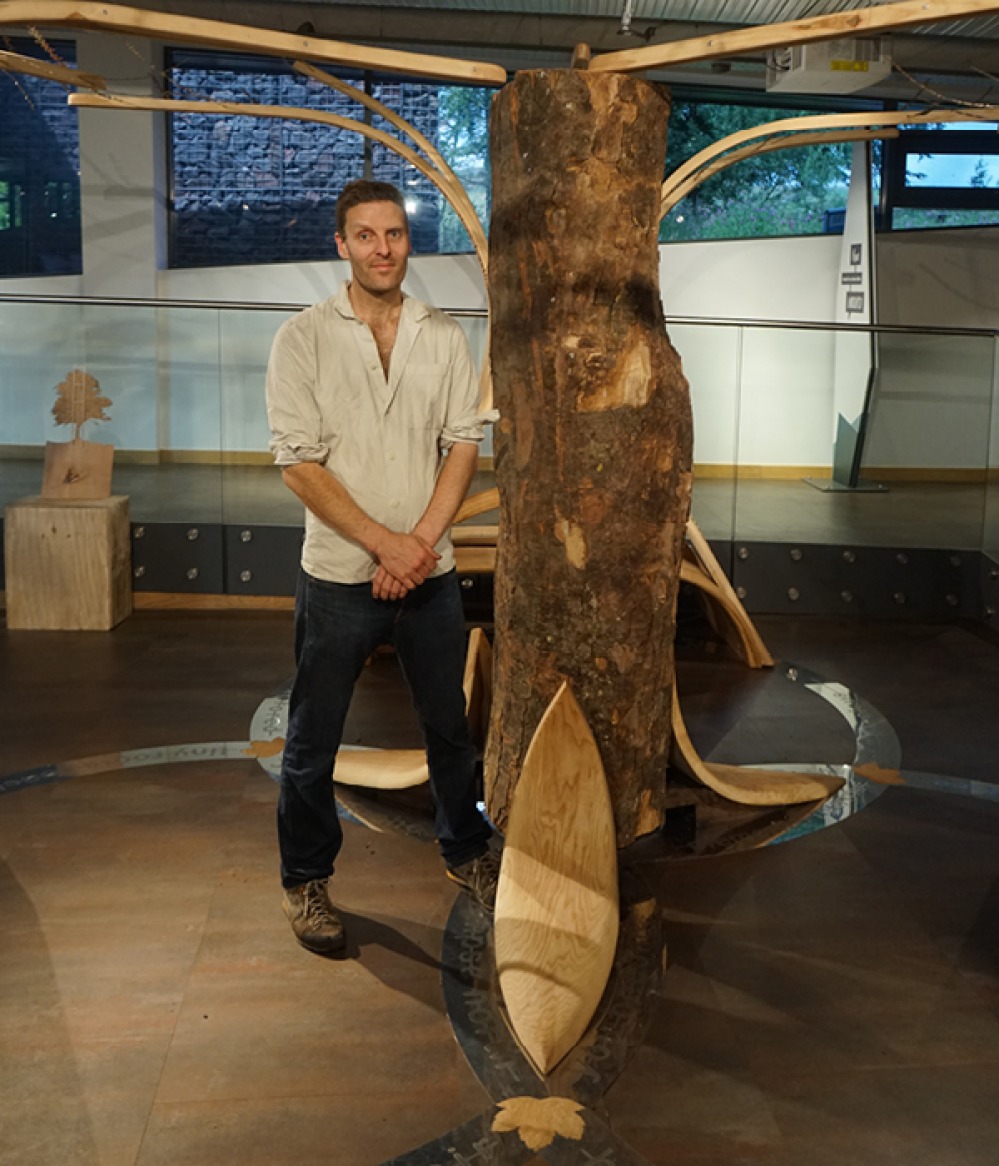
‘I think because it was such a powerful project and there were so many supporters around it, it was impossible for me not to 100 percent believe in the work all the way through’
The brief came in two parts, beginning with a show last September marking the one year anniversary of the tree being felled. ‘They wanted us to have the tree log in one of the small galleries at The Sill – that was going to be a prompt for public engagement,’ Charlie explains. ‘It was like a conversation starter where we could then be in the gallery and we could chat to people and find out what they wanted and what they cared about.’
The response from visitors was overwhelming, and a broad pattern emerged from the community’s feedback. ‘I took a lot of notes and we collected a lot of information that people had said from the public engagement and also from when the tree first came down. I asked people; this is your piece of wood, it’s going to come back here as a permanent home, what should we do and what’s important to you?’ he says. ‘They said that they wanted to be able to touch the tree, and they didn’t want it behind glass. They wanted to be able to give it a hug if they wanted. Also they said that they wanted to be able to sit down and wanted something around it so that it could be somewhere you could go with your family.’
The feedback was broken down into nature, people and place. ‘Quite often, people’s comments related to one of those three camps in how they were looking at or relating to the log,’ Charlie says. He appreciated that beyond its place at Hadrian’s Wall, the tree also existed in people’s writings, artwork and photographs, and weaving poetry into the exhibition acknowledged and honoured that. ‘We basically took things that people had said and then reframed it – as much as possible we kept the original wording,’ he explains. ‘This branching poem is for people to experience. They can come along and they can read the words, so the work is a poem and it’s also a sculpture.’
Distilling the emotion and love of an entire community into one permanent exhibition is a daunting prospect, but Charlie didn’t see it that way. ‘I felt like I had a real duty of care all the way through,’ he continues, ‘but I was never worried about it or stressed. I think because it was such a powerful project and there were so many supporters around it, it was impossible for me not to 100 percent believe in the work all the way through.
‘The belief and faith that everyone would like it was right there. I was consulting members of the community all the way through (including making the words), because I needed to make sure that we had the right tone. The fact that the actual design was more collaborative than just me on my own, it was easy to go for it.’

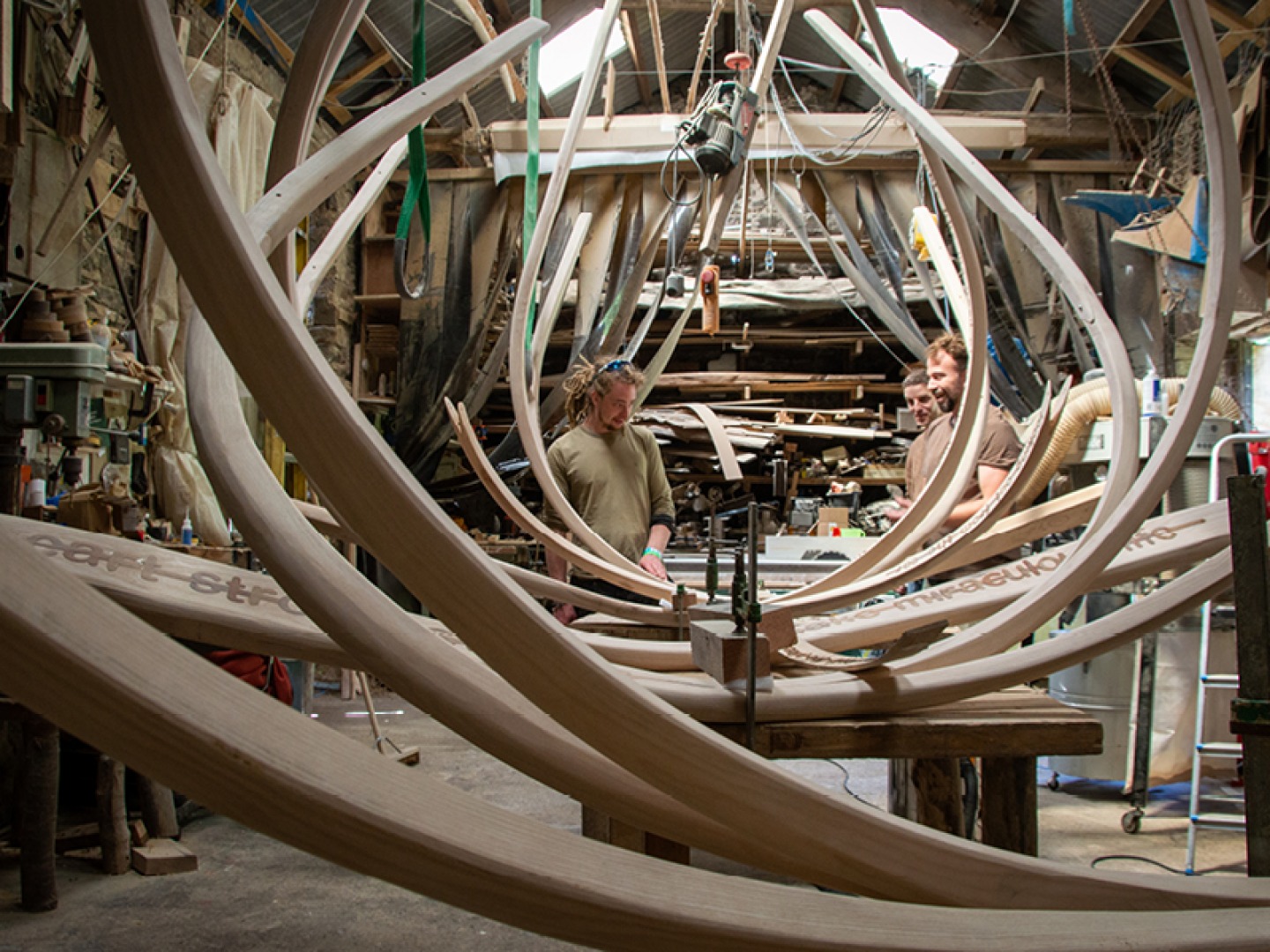
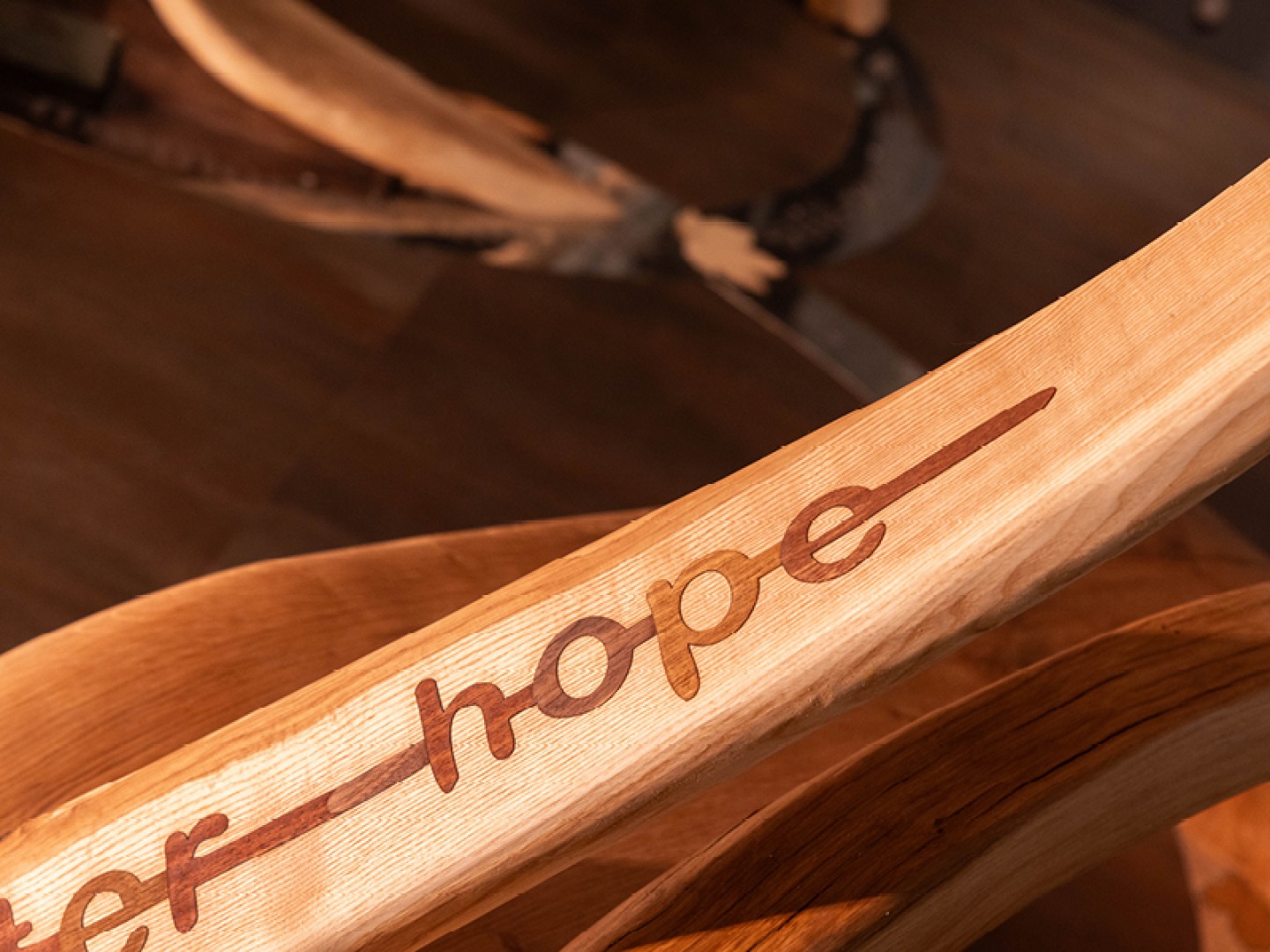
Having spent so much time with the remaining tree and with the local community, Charlie has had time to reflect on why the Sycamore Gap tree continues to mean so much to people, and hasn’t faded from the minds of the public. ‘I’ve been thinking about this quite a lot,’ he says. ‘I think that with the way human beings are, how we live in the world, and how we’ve learned to navigate the world around us, that we do naturally have special places which are fulcrums – places around which our worlds revolve. Everyone has their own special places.’ Charlie, who is originally from Dorset, can think of his own special places back home. ‘I’ve probably got three places where if somebody destroyed those places, I would cry. I think it’s a ubiquitous facet of human emotion to have a relationship with the landscape around you.’
The influence of Sycamore Gap went beyond its role as a landmark, and was vital to local communities who built their identity around the tree and its image. ‘I stopped to get a coffee on my way back once,’ Charlie recalls, ‘and there was a van with the tree as their logo which was parked next to me – it was just part of the local area.’
Legacy is a word which often comes up when discussing the Sycamore Gap tree – what will be the legacy of the men who felled it? Will the tree only be remembered for how it was destroyed? Charlie hopes that the new exhibition will help to keep the tree’s legacy alive, and help visitors reflect on their own treasured places. ‘If they’re someone who had a relationship with the tree, I hope that there’s at least one sentence that they find on there that strikes a chord with them. We tried to use a full spectrum of responses within the work. If they find something that strikes a chord in there with them then that would be quite beautiful,’ he says. ‘But also if people didn’t ever visit the tree, I hope that they go there and can learn that people did have a relationship with the tree. When it was cut down thousands of people cried – that is an insane and amazing thing that happened.’




